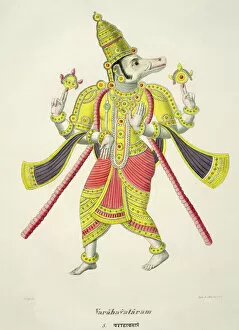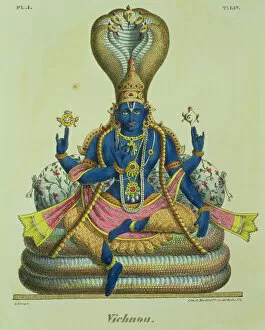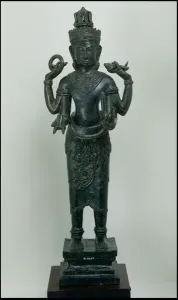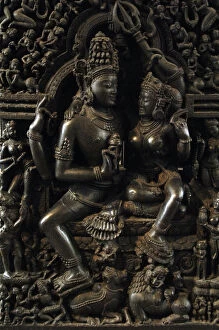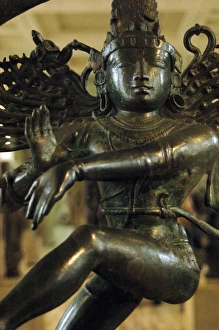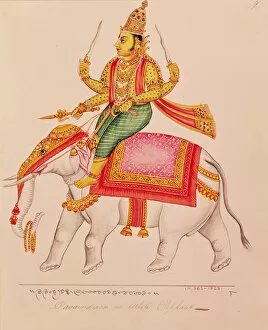Four Arms Collection
"Embracing the Divine: The Enigmatic Allure of Four Arms" Intriguing and captivating
All Professionally Made to Order for Quick Shipping
"Embracing the Divine: The Enigmatic Allure of Four Arms" Intriguing and captivating, the depiction in various sculptures and artworks from ancient India unveils a rich tapestry of religious symbolism. From the resplendent Shiva and Parvati sculpture in Orissa to the awe-inspiring Deity Mahakala crafted with wood and gold leaf, these divine representations evoke a sense of wonder. The eighth to ninth-century Vishnu statue adorned with gold and silver showcases the deity's omnipotence through his multiple limbs. Similarly, Hari-Hara, as depicted by Pierre Sonnerat in his Voyage aux Indes et a la Chine, merges both Shiva and Vishnu into one form—a testament to their interconnectedness. Bhairava's imposing figure carved from andesite exudes power while Ganesh enthroned on wood embodies wisdom. These deities' four arms symbolize their ability to simultaneously engage in multiple aspects of life—protection, creation, destruction—reflecting their multifaceted nature. The goddess Kali holding a thunderbolt made from ivory epitomizes her fierce energy harnessed for righteous purposes. Meanwhile, Shiva Mahadeva's bronze sculpture embellished with gold and silver exemplifies his cosmic presence encompassing all realms. As we delve deeper into this artistic realm, we encounter an aspect of Shiva captured by Pierre Sonnerat—an enigmatic portrayal that invites contemplation about divinity's mysteries. Finally, Varaha engraved by de Marlet enchants us with its vibrant colors—a vivid representation showcasing Lord Vishnu rescuing Mother Earth from chaos. These depictions remind us that beyond physical forms lie profound spiritual meanings. The manifestation signifies transcendence over human limitations—the ability to embrace diverse roles effortlessly while embodying divine qualities such as strength, compassion or knowledge. Through these masterpieces spanning centuries pasts emerges an appreciation for the intricate symbolism and devotion to these deities.










